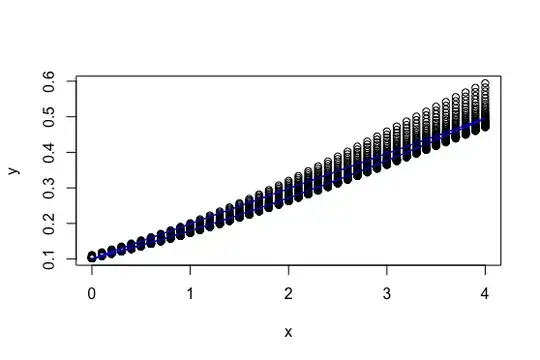Understanding the question as literally meaning each of the $2^{n_0+n_1+n_2}$ subsets of boxes is equally likely, we may obtain a solution as follows.
A generating function for the counts of boxes of each type is
$$f(x_0,x_1,x_2;n_0,n_1,n_2) = (1+x_0)^{n_0}\,(1+x_1)^{n_1}\,(1+x_2)^{n_2}.$$
When expanded as a polynomial, the coefficient of $x_0^{k_0}x_1^{k_1}x_2^{k_2}$ counts the number of subsets of the boxes consisting of $k_0$ empty boxes, $k_1$ boxes with one coin, and $k_2$ boxes with two coins.
When $k_i$ boxes of type $i$ are chosen, the total number of coins is $k_1+2k_2.$ This total will be found as the coefficient of $x^{k_1+k_2}$ in the expansion of $$f(1,x,x^2;n_0,n_1,n_2) =2^{n_0}(1+x)^{n_1}(1+x^2)^{n_2}.$$ To find how many are multiples of $3$ we must decimate this expansion, giving the resulting count as
$$\begin{aligned}
&F(n_0,n_1,n_2)=\\&(f(1,1,1;n_0,n_1,n_2) + \omega f(1,\bar\omega,(\bar \omega)^2;n_0,n_1,n_2) + \bar{\omega} f(1, \omega, \omega^2;n_0,n_1,n_2))/3 \end{aligned}$$
where $\omega^3=1$ is a primitive cube root of unity.
Writing $N=n_0+n_1+n_2,$ this simplifies to
$$F(n_0,n_1,n_2) = \left(2^N - 2^{n_0}q\right)/3$$
where the correction term, an integer in $\{-2,-1,1,2\},$ is
$$q = 2\cos\left(\frac{n_2-n_1+3}{3}\,\pi\right).$$
Multiply the count $F$ by the common chance of $2^{-N}$ to obtain the probability.
The value evidently will differ from $1/3$ by an exponentially small amount in $n_0-N=n_1+n_2.$
Here is a table of some of the probabilities.

The color bands highlight swathes of approximately equal numerators, where $n_1+n_2$ is constant. The patterns by which these numerators alternate are determined by the variation in the correction $q.$
